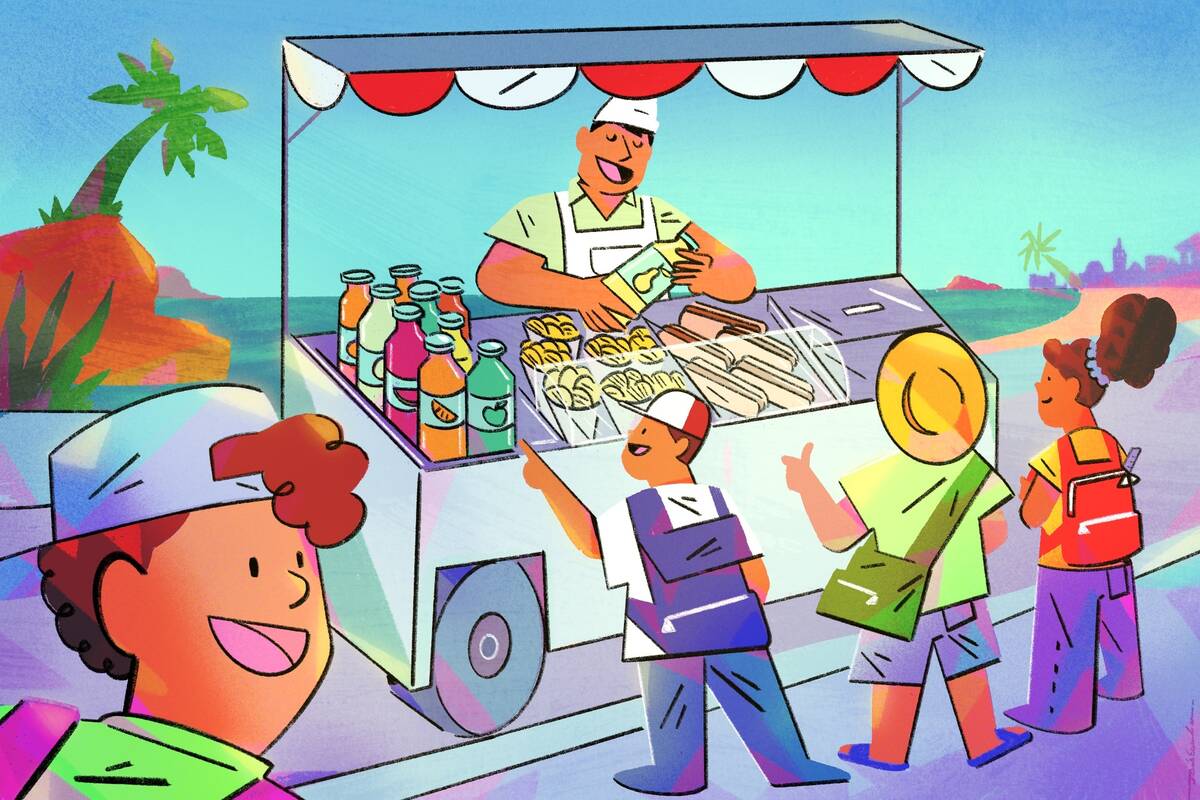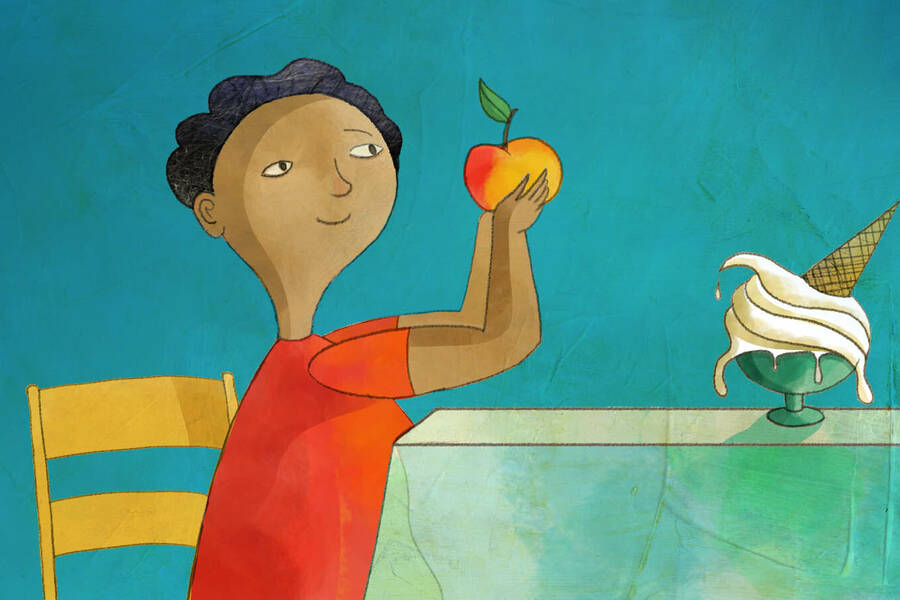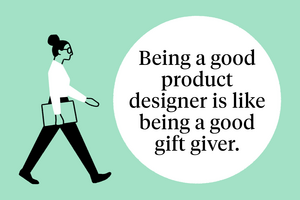Marketing Sep 1, 2024
How the Right Price Promotion Can Nudge Kids to Choose Healthier Foods
“It shows that kids are sensitive to prices.”

Jesús Escudero
Getting children to make healthy food choices often seems like a losing battle.
Food companies spend more than $1 billion per year marketing to children, and ultra-processed foods now constitute the majority of kids’ diets. Foods high in sugar and fat are often much cheaper than healthier options, especially in developing countries.
Those forces have led to public health ramifications around the world. In the United States, one out of every six children is obese, and the number of overweight children has tripled in some developing countries over the past three decades.
Michal Maimaran, a professor of marketing at Kellogg, has spent much of her career asking how, despite the barrage of external forces that make eating healthily so difficult, children can nonetheless make better food decisions. As a research professor of marketing at Kellogg, she has studied the factors that affect children’s decision making—both at home and at school.
Now, she has discovered a new approach to getting kids to choose healthy foods.
In a series of experiments, she and her coauthors, Szu-chi Huang of Stanford University and Daniella Kupor of Boston University, show that creating the right kind of product promotion can encourage children to choose healthy foods on their own. Maimaran and her team found this promotion both increased sales of a healthy food option during a price promotion and kept higher sales going after the promotion ended.
“We found a tangible approach that could be used on a larger scale to help children choose healthier foods,” she said.
Testing out different products and messaging
In many parts of the world, foods high in fat and sugar are much cheaper than healthier options.
Prior research that looked into offering children price discounts to offset this challenge typically studied older children and used additional tools in addition to discounts, making it hard to isolate the effect of the discount alone.
Maimaran and her coauthors wanted to overcome these obstacles. And, partnering with UNICEF, they identified three elementary schools in Panama where they could test their ideas. Panama was an ideal location in part because developing countries are underrepresented in the literature on healthy eating, but also because of the prevalence of kiosks in schools.
Students in Panama, even young kids, often carry money and make independent food and beverage purchases at school kiosks, which offer both healthy- and junk-food options. This scenario allowed the researchers to track the students’ purchases at an individual level while knowing that these purchases are made by the children themselves without adults’ intervention.
“Getting these results really validated that kids actually understand what money is, and that was very encouraging.”
—
Michal Maimaran
The team wondered: Would providing kids with discount coupons to redeem on healthy items at the kiosk incentivize healthy choices in this population?
There were some doubts over whether young children in particular could be swayed by the coupons. Students in these schools were aged 6 to 11. Some research suggests that consumers under 9 do not understand the value of money and that children often do not consider price when shopping. But other research has found that kids as young as 5 can distinguish between spending and saving.
There was also the question of how to word the coupons. The team used two different messaging types. A direct message would simply state the item’s final (discounted) price, while a derived message would require some mental calculation (e.g., take $2 off the original price).
This difference is key, since children ages 6-7 think in a more concrete manner and tend to rely on one observable dimension, such as size or shape, when making decisions. But by around age eight, kids can think more abstractly and can use more complex information-processing strategies, and prior research suggests that when consumers are required to process more information, it can actually heighten that information’s persuasive impact.
Finally, researchers were keen to understand what would happen to purchases of healthy food, both if the promotion was repeated and after the promotion ended.
Promoting healthy options in Panama
The research team tested these ideas in three elementary schools in Panama, where, like the United States, children often eat calorie-dense, nutrient-poor foods. For instance, 52 percent of Panamanian children eat fast food weekly, and 81 percent drink sugary drinks five or more times per week.
Along with UNICEF, Maimaran and her collaborators interviewed local groups to select one healthy product to promote at each school kiosk. At the first school, that product was a healthy cereal shake that was pricier than more than two-thirds of other kiosk options. Before their promotion began, the kiosk sold about 24 of these shakes per day.
At the start of the experiment, each student in the school got a coupon for the shake. About half the students got a coupon that said, “A cereal shake usually costs 1 dollar. Only Tuesday to Thursday! Pay only 80 cents when you buy the cereal shake!” Other students received a coupon that required some mental math: “A cereal shake usually costs 1 dollar. Only Tuesday to Thursday! Pay 20 cents less when you buy the cereal shake.” Each coupon had a serial number to indicate the student’s grade and class, as well as a unique count number, so the coupons could not be duplicated. The kiosk manager collected and tracked the coupons, which only had a three-day redemption period.
Then, three weeks after the first coupons were given out, the team handed out another round of identical coupons to see how the kids would respond this time around. Previous research has shown that repeated improvement of healthy choices canfuel habit formation and solidify behavior change.
An eventual decline in sales
At first, it seemed like the coupons worked. Shake purchases initially increased by more than 35 percent. But after the promotion ended, shake purchases actually decreased below their original baseline. When a second round of coupons was given out, purchases increased again, but only by a slim margin over baseline. Then, when the promotion ended, purchases dropped even more.
“When the promotion ended, it drew attention to the true price of the product,” Maimaran said. “That fact that it was expensive became even more salient and led to a decline in sales.”
When the researchers analyzed the effect of the promotion by age, they found that, initially, the direct message was more effective for younger kids, while the derived message that required more effort was more effective for older kids.
But when the coupon promotion was repeated, the older children seemed to lose interest in both types of coupons. Redemption rates dropped.
Conversely, the younger children who received the derived coupons that required math used more of them this time. The research team hypothesized that the repeated exposure to this kind of messaging facilitated the children’s confidence and ability to process a more complicated message.
When the team ran a similar experiment promoting a different product at a second school, a healthy fruit beverage that was also more expensive than two-thirds of the other items, they got similar results.
An approach for higher post-promotion sales
But the team wondered: How could they get kids to keep buying healthy foods even after the promotion ended?
The research team had an idea. In a third school, they ran another similar study, again with a healthy-fruit beverage. But this time, the beverage was not among the most expensive products sold at the kiosk. It was only more expensive than 27 percent of the other items.
Again, sales of the beverage increased during the promotion—from less than one beverage a day all the way up to 34 beverages a day—and dropped after the redemption period. This time, though, the drop wasn’t so low—the kiosk still sold about five beverages a day. When they repeated the promotion, they again saw a bump and drop in sales. Again, the drop wasn’t below baseline. Twelve days after the second promotion, the kiosk still sold more than two of these beverages a day.
The researchers concluded that when a healthy product’s original price is relatively inexpensive compared with other options, it can benefit from a post-promotion sales bump.
Empowering kids to make the right choices
One main takeaway is that relative price matters. So don’t promote healthy food that is much more expensive than other options. If you want the effect to stick around, choose a product that is relatively affordable.
“It shows that kids are sensitive to prices,” Maimaran said. “Getting these results really validated that kids actually understand what money is, and that was very encouraging.”
Maimaran also advises thinking carefully about matching the language of the coupon message to the age of the children receiving these coupons. Keep in mind that when promotions are repeated (as they often are), this will give even younger children the time and confidence to process more-complicated messages.
Ultimately, the goal is to encourage healthy behavior that will stick with kids throughout their lives. “Parents aren’t always going to be around,” Maimaran said. “We need to empower kids.”
Emily Ayshford is a freelance writer in Chicago.
Huang, Szu-chi, Michal Maimaran, and Daniella Kupor. 2024. "Using Price Promotions to Drive Children’s Healthy Choices in a Developing Economy." Journal of Marketing Research.



